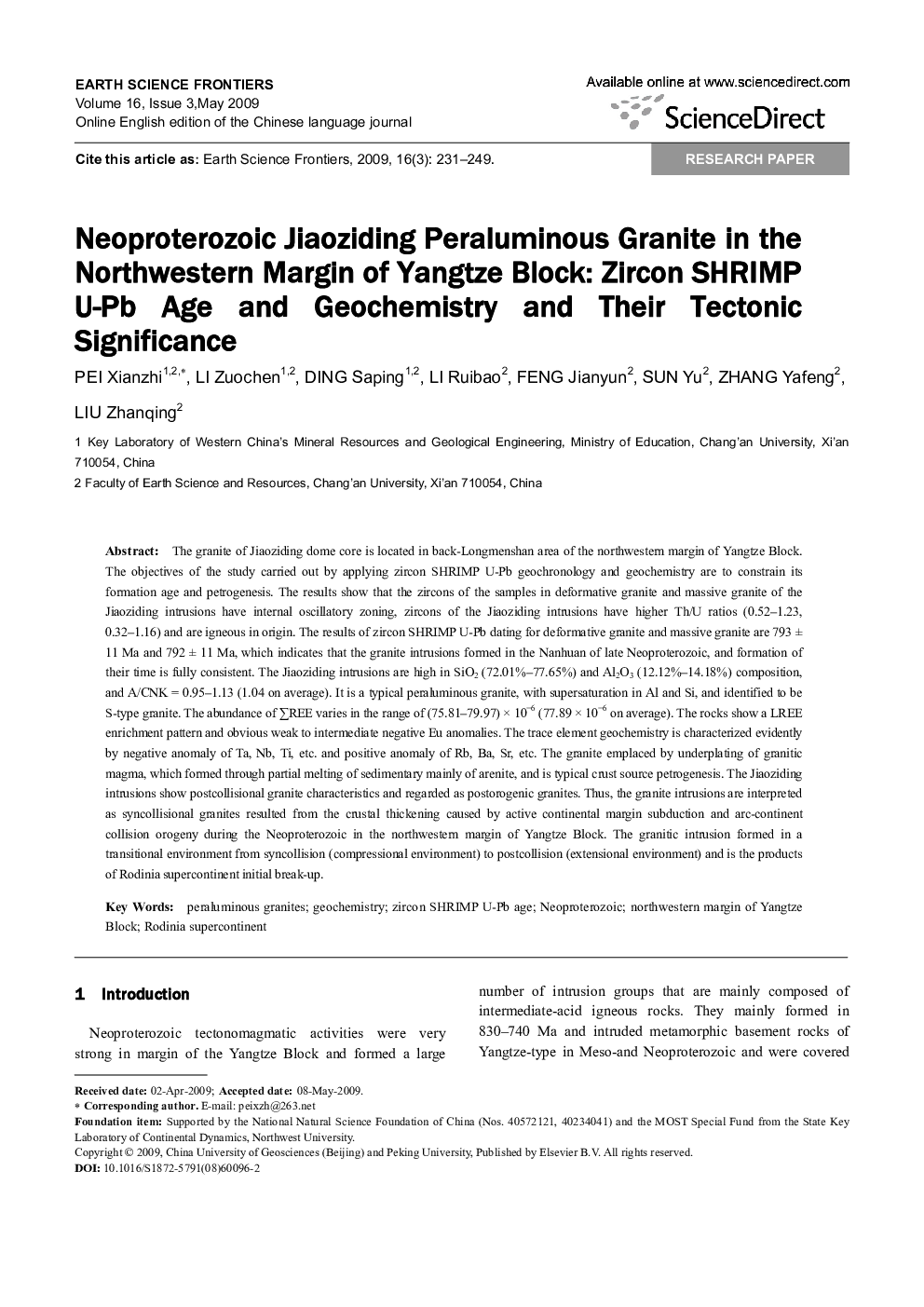| Article ID | Journal | Published Year | Pages | File Type |
|---|---|---|---|---|
| 4701518 | Earth Science Frontiers | 2009 | 19 Pages |
The granite of Jiaoziding dome core is located in back-Longmenshan area of the northwestern margin of Yangtze Block. The objectives of the study carried out by applying zircon SHRIMP U-Pb geochronology and geochemistry are to constrain its formation age and petrogenesis. The results show that the zircons of the samples in deformative granite and massive granite of the Jiaoziding intrusions have internal oscillatory zoning, zircons of the Jiaoziding intrusions have higher Th/U ratios (0.52–1.23, 0.32–1.16) and are igneous in origin. The results of zircon SHRIMP U-Pb dating for deformative granite and massive granite are 793 ± 11 Ma and 792 ± 11 Ma, which indicates that the granite intrusions formed in the Nanhuan of late Neoproterozoic, and formation of their time is fully consistent. The Jiaoziding intrusions are high in SiO2 (72.01%–77.65%) and Al2O3 (12.12%–14.18%) composition, and A/CNK = 0.95–1.13 (1.04 on average). It is a typical peraluminous granite, with supersaturation in Al and Si, and identified to be S-type granite. The abundance of ∑REE varies in the range of (75.81–79.97) × 10−6 (77.89 × 10−6 on average). The rocks show a LREE enrichment pattern and obvious weak to intermediate negative Eu anomalies. The trace element geochemistry is characterized evidently by negative anomaly of Ta, Nb, Ti, etc. and positive anomaly of Rb, Ba, Sr, etc. The granite emplaced by underplating of granitic magma, which formed through partial melting of sedimentary mainly of arenite, and is typical crust source petrogenesis. The Jiaoziding intrusions show postcollisional granite characteristics and regarded as postorogenic granites. Thus, the granite intrusions are interpreted as syncollisional granites resulted from the crustal thickening caused by active continental margin subduction and arc-continent collision orogeny during the Neoproterozoic in the northwestern margin of Yangtze Block. The granitic intrusion formed in a transitional environment from syncollision (compressional environment) to postcollision (extensional environment) and is the products of Rodinia supercontinent initial break-up.
